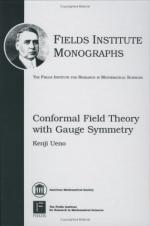|
This section contains 350 words (approx. 2 pages at 300 words per page) |
If a field theory possesses a gauge symmetry, then the theory is invariant under certain local transformations of the fields. The description of the system has a built-in redundancy corresponding to the action of a gauge transformation, which is typically thought of as an element of an algebraic group. By choosing a particular gauge, the redundancy can be eliminated. Measurements that are made of any physical quantities are independent of the precise choice of gauge.
An example serves to illustrate the point. The quantum field theory that describes the interactions of charged point particles and radiation is quantum electrodynamics (QED). This theory encodes the quantum mechanical properties of electrons and photons in a manner that is consistent with the theories of special relativity and classical electrodynamics. The electrons and photons are thought of as fields, an extension of the notion of wave functions from quantum mechanics. QED possesses a U(1) gauge symmetry. The group U(1) can be represented as the unit circle in the complex plane, or the collection of complex numbers z = x + iy whose modulus z equals 1. Such numbers are called phases. The opportunity to redefine the fields in QED by a local phase without affecting the theory in any way is possible. Multiplying the electron field by a phase is compensated for by a corresponding shift in the photon field. The Lagrangian of the theory, which encodes all the dynamics of QED, remains invariant under this combined operation. Because it is impossible to add a mass term for the photon to the QED Lagrangian that respects the U(1) gauge symmetry, the photon must be massless. A continuous symmetry, such as a gauge symmetry, leads to a conserved current as a consequence of Amalie Noether's theorem.
The theory of the particles observed in nature and their interactions (excluding gravity) is a gauge theory with gauge group SU(3) x SU(2) x U(1). This is called the standard model. Yang-Mills theory is the general name given to a model with a gauge group that is non-Abelian (the product of elements in the group does not commute).
|
This section contains 350 words (approx. 2 pages at 300 words per page) |


